
PAY
IT FORWARD
CHAPTER NINE:
tale of two cities
Written by Rick
Archer
|
|
 |
Rick
Archer's Note:
Did you know Maria
Ballantyne was born on Christmas Day?
Oddly enough, I originally chose a picture
of a young girl placing a star on the
Christmas tree to serve as my logo for
A Simple Act of
Kindness, the 2005 story that
commenced my writing career. However, I
had no idea her birthday
was on Christmas until my final draft in
2024. Interesting coincidence.
Assuming my Readers have been
following the bouncing ball, the origin of Pay it
Forward can be traced to Mrs. Ballantyne's startling
Parking Lot intervention in 1968. Considering the
seriousness of my crisis, her presence felt like a Miracle.
A mysterious
second coincidence in 1978 sealed our friendship for life.
27 years later, in 2005 I decided to post the story of our
1968 Event on my dance studio website. In addition
to a warm response from my dance students, Mrs. Ballantyne
was touched by the story. She thanked me personally over lunch.
Four years later, in 2009 Mrs.
Ballantyne reappeared at my dance studio. This was the
night she explained that Mr. Salls had been my secret
benefactor all along. Astonished, I wasted no time
expanding my Internet story to include Mr. Salls.
Mrs. Ballantyne was so pleased by my updated version, she
came to see me again in early 2010. This time she went
into much greater detail about what her friend "Charlie Salls"
had told her about me.
Four years later, in 2014 I was
contacted by Kim Salls and his daughter Catherine.
They were both very touched by the 2009 Internet story I had written
about Mr. Salls. In addition they were incredibly
forthcoming in their attempts to help me learn more about my
benefactor.
I was in the process of updating my story
to include the details of Mr. Salls' youth when the
strangest thing happened. In 2015 another
piece of the puzzle fell into my lap out of thin air. Due to my unusual relationship with
Maria Ballantyne, she had given me access to highly personal
details of her relationship with Sam Maceo, the Galveston
Godfather. However
there was one secret she never shared with me. I
discovered its existence totally by accident when I suddenly
discovered the identity of her mysterious brother George.
|
Curious, I began to do some research.
In addition to helping young Maria Ballantyne get a college
education, Sam Maceo had previously helped her brother in a
similar way. This much I knew. What I did
not know was that Maria's brother George was one of the most
important men in America. I had remained
in the dark because Mrs. Ballantyne never volunteered her
brother's last name. To be frank, I was stunned when I
discovered the truth. As I digested this new dimension
to the story of Maria Ballantyne, I suddenly realized
something important about the history of Galveston that was
probably known only to me. Deciding this information
very much needed to be shared, I expanded my book to include
the Secret of the Brother and Sister. To fully appreciate
this remarkable Secret, a history lesson is necessary.
This is the Tale of Two Cities, Houston and Galveston. I think you will enjoy it.
|
|
|
GALVESTON:
THE pearl of the Caribbean
|
If Life was
Fair, Galveston, Texas, would be the major port of the
South. If Life was Fair, Galveston would be bigger than
Las Vegas.
But whoever said
Life is Fair?
Unlike the rest
of Texas which suffers from unbearable heat, Galveston is an
island paradise cooled by gentle ocean breezes. Often
referred to as the Pearl of the Caribbean, in the late
1800s, Galveston was the most advanced city in Texas.
Known as the first
city in Texas to have
electricity, Galveston had paved streets, a beautiful beach and
stunning Victorian homes.
Galveston was
so busy it rivaled
Hong Kong.
Well-positioned
on a
small
island just off the coast of southeast Texas,
Galveston connected Texas to other major
ports such as New York, Baltimore, Miami and New Orleans.
Galveston
had
the good fortune to possess a deep-water port easily
accessible to the shipping industry.
As
the leading port of the South, the city enjoyed great
prosperity. Indeed, Galveston was
fast
becoming one of the richest cities in
the world.
In
1900 Galveston was ranked as the second wealthiest per
capita city in the nation.
Grand houses were
scattered throughout
tree-lined neighborhoods. Huge southern mansions lined Broadway.
Everyone benefitted from Galveston's bounty, not just
the rich. The middle class and working class
enjoyed a very high
standard of living.
Meanwhile, 50
miles northwest of Galveston,
Houston's economy
was stagnant.
Houston was a very unpleasant
place to live. More swamp than land mass, the city was infested with mosquitoes.
Houston was plagued by floods, mud-filled unpaved streets, extreme heat and
oppressive humidity.
Galveston had all the advantages and Houston was going
nowhere.
Then in 1900
something terrible happened, something so terrible that
overnight the fortunes of Houston and Galveston were
instantly reversed.
|
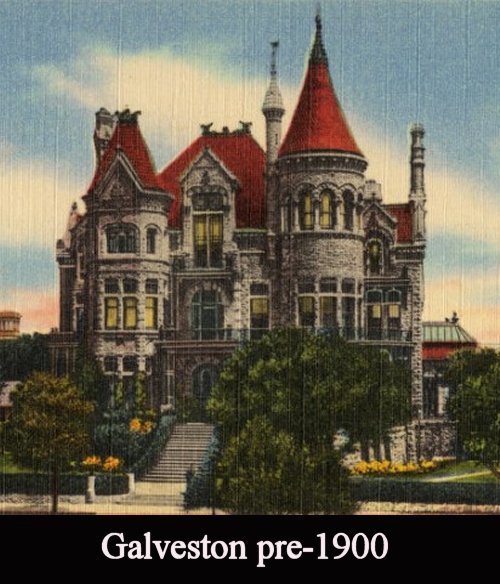 |
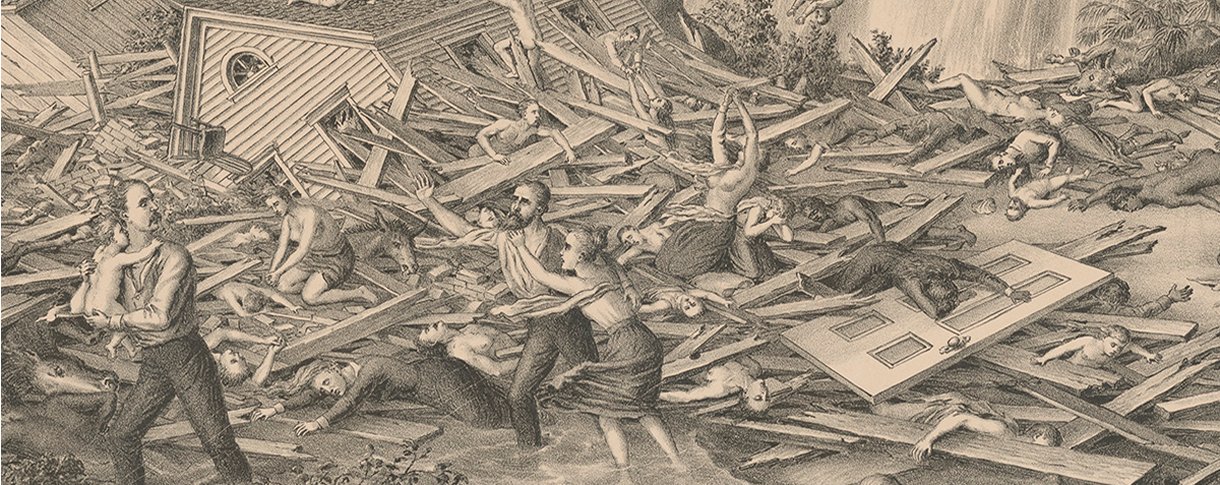
GALVESTON:
THE great storm
|
It was
September
8, 1900.
The people of Galveston never knew a
hurricane was
coming.
By the time they found out,
it was too late.
There was no escape.
1 in
4 citizens died, 6,000 in all.
|
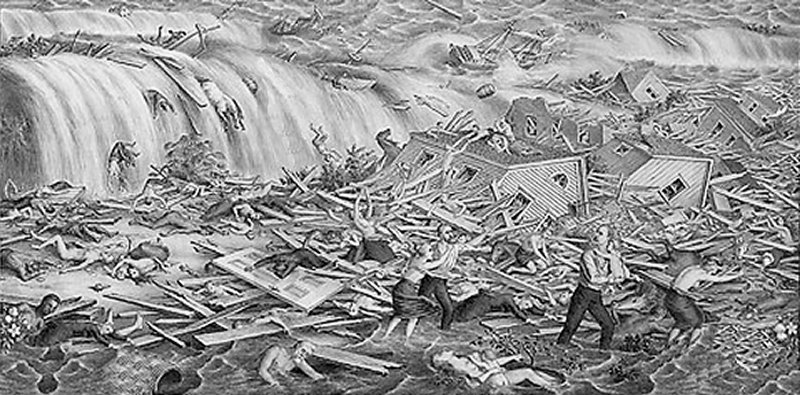 |
The
Hurricane of 1900 was the defining event in
Galveston history. Completely
blindsided, the citizens had no way to
escape nor was there any refuge. The
city was defenseless.
With no seawall for protection, the highest
point was only 9 feet tall. Since there was no
'high land' for safety, once the 15-foot storm
surge inundated Galveston, people drowned
right and left.
At least 6,000 people lost their lives that
day, possibly even more. The
ocean surge flattened every structure on the
sea side of the island. In all, 4,000
structures were demolished. Only one-third of the city's buildings
were still standing in the aftermath.
Oddly enough, the worst natural disaster in
American history was never even given a name.
They simply called it The Great
Storm.
|
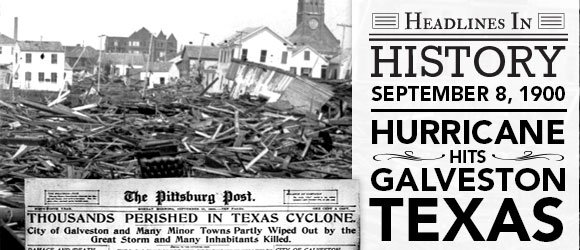 |

HOUSTON: BUFFALO
BAYOU and white oak
|
Many
cities have a major river that gives it an identity.
Take for example the Seine River in Paris, the
Danube in Budapest, or the Thames in London.
Houston does not have a major river. It is called the 'Bayou City'
because it relies on a dozen sleepy bayous to channel its
rainwater. Of these various bayous,
Buffalo Bayou and White Oak Bayou stand out.
Downtown Houston was birthed at the exact spot where
these two bayous merge.
Basically
Houston serves as a drainage ditch for all of North
Texas. Is this a Curse or a Blessing? It
is both. Houston owes its existence
to Buffalo and White Oak. However, at the same time these
two
bayous have caused huge headaches. Of
the two, Buffalo Bayou is the celebrity. When
the two streams got married, only one got to keep
its name. Which is kind of a joke because
White Oak was by far the more powerful of the two.
No doubt there are married women who see the irony
in this.
Although it is
hard to believe, at one time
herds of bison
roamed the prairie west of Houston. The
headwaters of Buffalo Bayou were so shallow and
slow-moving it was effortless for buffalo to cross
the stream. Meanwhile White
Oak Bayou was the killer.
In the first
100 years of the city’s history, Houston suffered 16
major floods, some cresting at more than 40 feet.
Two particularly bad floods inundated
downtown Houston in 1929 and 1935. This
menace finally
galvanized a response. Deciding it was time
for a lobotomy, the US Army Corps of Engineers
deepened and
widened White Oak Bayou, then lined it with a layer of
concrete in order to subdue the beast.
Ordinarily the
bayous are about as dangerous as a wading pool.
However, whenever it rains with authority, that is
when the problems begin. Unlike arid West
Texas, East Texas receives abundant yearly rainfall.
Even today it takes Houston's bayous forever to drain after a
storm.
And when it
rains
really hard, uh oh, watch out.
Houston's bayous are not wide enough to
quickly evacuate excessive downpour. As a
result Houston is vulnerable to extreme
flooding. It would help if Houston had a river
with a swift current, but no such luck. Instead the city
is stuck with a dozen listless bayous which do a
poor job moving water to its eventual destination in the Gulf.
Houston has
been susceptible to bad floods since its origin. There is a good reason for that. Houston is a delta.
Deltas form as streams empty water
and sediment into lowlands that do not drain well.
There's an old
joke that the terrain in East Texas is so flat you
can look down on Dallas from a Houston skyscraper.
There is some truth to that. If it rains in
Dallas, the water passes through Houston
on its way to the Gulf of Mexico. Although the
rainwater eventually makes its way to Galveston Bay,
it has a bad habit of taking its sweet time before
leaving.
What
exactly is a bayou?
Bayous are exclusive to the southern United States. Some call them
mini-rivers, but not really.
The term 'Bayou'
refers to slow-moving streams, marshy lakes,
wetlands, swamplands, and creeks.
Bayous tend to be
stagnant whereas rivers are relatively swift.
Bayous typically exist in flat, low-lying
areas. Since water does not move very fast
without any sort of slope,
Houston's
bayous are inefficient at draining.
Much of the rainwater
never leaves. It just sits there for days on
end in swamps and ditches. Some of it dries,
some of it doesn't. These conditions are
perfect for mosquito larva to breed. Due to
the extensive swampland, mosquitoes have long been a serious headache for Houston.
Because Houston
is ridiculously flat, back in the old days half the
city was under water any time it rained. Add
that to the excessive
heat, oppressive humidity, and
mosquitoes thick as fog. Fortunately over time, things
have
improved. Paved roads
arrived in
1910. The bayous were streamlined in 1940.
Air conditioning came to Houston in 1960.
However, before that,
Houston was a
lousy place to live. In 1900 the dirt roads
would turn to thick mud
in the heavy rain. If the rain was bad enough,
transportation would come to a complete halt.
The heat and
humidity was almost
unbearable, especially in the summer. Whether
inside or out, it
was impossible to avoid sweating all day long.
Sugarcane, cotton and rice
farmers were known to keel over and die from summer heat
exceeding 100 degrees.
These days you can't build a new school in Houston
without finding bones from people buried in the same
spot where they died working the fields.
Hot and muggy,
no one really wanted to live in such nasty place.
Pre-1900,
the British government was forced to give hazard pay
to diplomats forced to live in its Houston embassy. Ulysses S. Grant once said if he owned Hell
and Texas, he would rent out Texas and live
in Hell because the conditions were better. So why
did people even live in Houston?
Although
Houston was a mediocre choice to carve out a living
at the turn of the 20th Century, the city did have
its advantages. The land was good for agriculture.
Lots of rain, lots of plain, few rocks. The bayous helped.
Since there were no cars or roads solid enough to
depend on, these waterways offered a convenient
method for cotton
and rice farmers to leisurely float their crops
downstream from far-flung areas north and west of
Houston.
Buffalo
Bayou
began
as a mere
trickle 30 miles west of downtown Houston in an area
known as the Katy prairie.
Despite its
humble start, this lazy stream grew larger as bayous
such as White
Oak
coming from the
north connected downstream. At the junction of
Buffalo and White Oak, Buffalo Bayou tripled in
size. Now that this once-narrow stream was
much wider, this junction
became a
convenient spot in the early 1800's for flatboats to
load their cotton and rice crops onto much larger
barges. By way of the enhanced Buffalo Bayou,
the barges would ferry cargo downstream to Galveston
Bay, then onward to the deep-water port of
Galveston.
Due to
Buffalo Bayou's importance as a terminus for the
transfer process, commerce developed in the area
surrounding the Buffalo-White Oak merger.
Indeed,
the
birthplace of Houston
can be seen today by crossing the Main Street bridge.
Buffalo Bayou
played a role in the 1836 War for Texas independence
from Mexico. At the site where Buffalo Bayou
enters Galveston Bay, an army of Texans serving
under Sam Houston defeated the Mexicans at a
battleground known as San Jacinto. 20 miles
upstream, the small settlement which had formed next
to
the Buffalo-White Oak confluence was quickly renamed 'Houston'
to honor the general's victory.
For most
of the 1800s Houston served as vassal to Galveston.
The island city owed much of its prosperity to crops
that reached Houston first, then was delivered to
the port of Galveston. Houston's dependency on
Galveston lessened somewhat in the 1870s due to the
emergence of railroads. An area just north of
downtown Houston was perfect for transferring rice
and cotton from Buffalo Bayou onto railroad cars.
The railroads would then transport cargo to West
Texas and neighboring states. From this point
on, half of Houston's cargo went to railroads, the
other half to Galveston. In the process,
Houston's population finally caught up to its
wealthy counterpart.
Truth be
told, if not for the Great Storm, Houston would
never have amounted to much. Galveston was the
destination while Houston was merely a relay
station.
If anyone was
given a choice between living
in Houston or living in Galveston, no one in their
right mind would have chosen Houston. However,
the Great Storm changed a lot of minds.
Houston
survived the Great Storm relatively unscathed due to
being 50 miles inland. Galveston wasn't so
lucky. At the moment, the island was too crippled to
respond. However, the city still possessed
the finest port in the South. All it needed
was time to rebound. Alas, it was not to be.
Strangely
enough, Houston's inauspicious Buffalo Bayou would
deliver the ultimate Kill Shot.
|
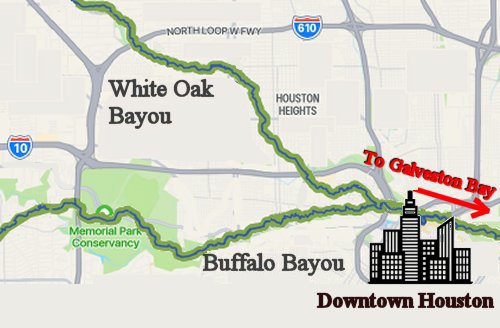
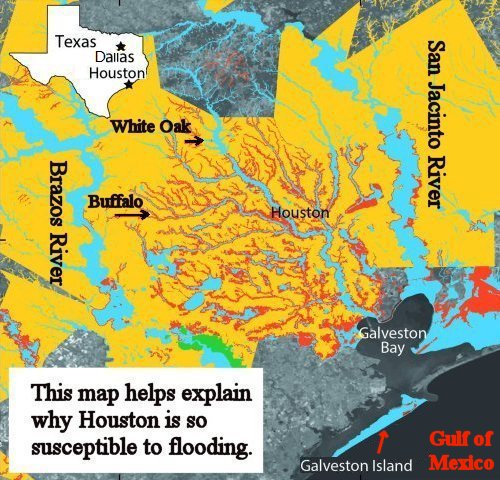
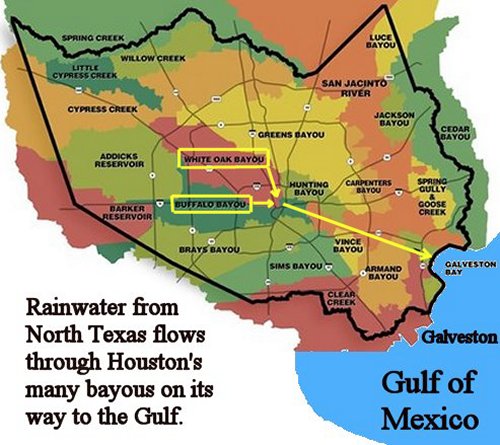
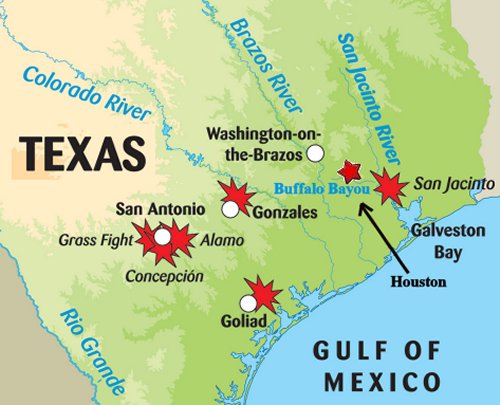
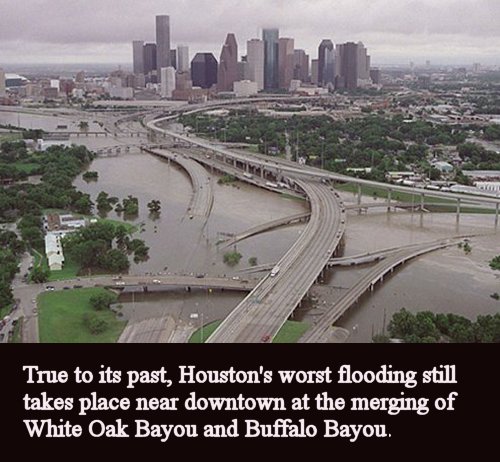 |
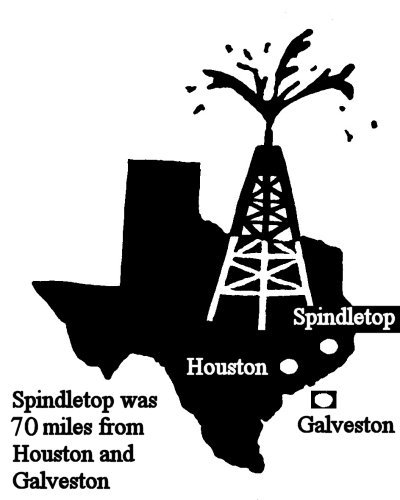 |
Four months
after the hurricane, Galveston was hit by another
round of bad luck.
In
January 1901, oil was discovered near Beaumont, a
small city in East Texas. Known as Spindletop,
this was the largest oil field in the history of the
world to date. People immediately
began to wonder if
there was more oil to be found in Texas.
This possibility
generated a frenzy of successful oil
exploration throughout the state.
Spindletop was 70 miles from
Houston and 70 miles from Galveston. Galveston was
by far the preferred destination since the new-found
oil was coveted throughout America as well as
foreign ports. Only one problem.
Although
Spindletop presented a golden opportunity
for shipping, Galveston
lay in ruins and was unable to respond.
Meanwhile, since Houston and Beaumont were
already connected by railroad, the Bayou City was in
position to benefit immediately.
Imagine
the hand-wringing. Galveston possessed the finest natural port in the
South, but was unable to invest in the burgeoning oil
industry. At the moment Galveston's capital was tied up in building
a seawall to prevent future disasters. Over the
past 30 years, vote after vote to allocate money to
fund the
proposed seawall project had failed. However,
after the Great Storm, the project that had been delayed for years was finally
getting built. That was because the vote to
build the massive seawall had passed with little opposition
after the hurricane.
Someone with a dark sense of humor said most of the voters who
had previously voted against the seawall had probably
drowned.
Galveston's
leaders got another piece of bad news. Following the
Great Storm, they had hoped investors would rush in to
rebuild Galveston. On the contrary, the money men
stayed away in droves. Investors were
understandably leery of Galveston's vulnerable location.
They preferred to invest in Houston's new Ship Channel instead. Now that
the fortunes of the two cities had been reversed,
Galveston was never the same. In 1900 the
populations of Houston and Galveston were roughly
equal at 40,000. In 2000, one hundred years later,
Galveston stood at 60,000. And Houston?
Two million.
Who would have
ever thought an inland city would one day become
America's largest port?
Thank
you, Buffalo Bayou.
|

Arriving from New York in 1898,
a builder and investor named Jesse
H.
Jones quickly became Houston's
original mover and shaker. After great success in the
Houston area, Jones was asked to join the
Hoover administration to help battle
the Great Depression. When
Franklin Roosevelt
took over, FDR gave Jones a key
position in his cabinet to oversee
industrial expansion during World
War II. Jones became so
wealthy that in later years he
established the Jones Scholarship program
to help top-flight seniors
throughout Houston
pay for college.
Jones had just begun to make his mark when
the Great Storm and Spindletop took place
back-to-back in late 1900. Jones took careful
note of the Spindletop oil discovery.
He anticipated the oil strike plus the
growing importance of rice crops would create a
rapid shift in the Texas economy. With
Galveston knee-capped by the Great
Storm, Jones sensed
Houston was in perfect position to take
advantage. Jones recommended
expanding Houston's
infrastructure to accommodate the explosive growth of
the new Texas economy. And just where
should Houston start? Jones
had the perfect answer. He
proposed turning nondescript Buffalo
Bayou into the mighty
Houston Ship Channel.
Houston business leaders agreed this was a brilliant move.
Everyone knew Galveston possessed the finest port
in the Southwest.
The waters were deep and the location was
convenient to shipping in the Gulf of
Mexico. However the Texas economy could
not wait for Galveston to regroup.
Consequently the
decision to build the Houston Ship Channel was
swiftly approved. No doubt
Galveston's leaders wanted to tear
their hair out. As Houston
began its rise to prominence,
Galveston was too crippled to make a
counter-move.
Galveston officials stared glumly as
Houston dredged out Buffalo Bayou
and widened it.
Slowly but surely the engineers created an artificial
canal large enough to
serve huge oil tankers. Ironically, the Ship Channel
extended to the edge of
downtown Houston. A mere four
miles separated Main Street Bridge
marking the White Oak-Buffalo Bayou
confluence and the Turning Basin of
the Ship Channel. Smug
oil executives in their tall skyscrapers
could look out and survey their
growing empire at the expense of
poor Galveston.
Jesse Jones may have been the luckiest
man to ever live. Opening in 1914, the
Houston Ship Channel quickly became one of
the busiest seaports in the world.
Two reasons. The Panama Canal
opened in 1914, the same year as the Ship
Channel. By all rights, the Panama
Canal should have been
Hong Kong to Galveston.
Instead it was Hong Kong to Houston.
Jesse Jones' lucky streak continued when
World War I broke out in 1914. Since
this war was highly mechanized, it
created an overwhelming thirst for oil that could only
be
found one place on earth - Houston, Texas. With
multiple oil refineries lining the Ship Channel, many an oil tanker
left Houston headed for Europe.
All told, the Houston
Ship Channel, the Panama Canal and World
War I served to propel Houston to
instant world prominence.
The emergence of Houston
as the dominant seaport in
the South accelerated its evolution into the
nation’s petrochemical leader. No one ever
said Life is Fair.
Thanks to the
Great Storm, Houston was the Energy
Capital of the
world while beleaguered Galveston was forced to
watch
in despair.
The completion of the Ship Channel
put the final nail in Galveston's
coffin. Houston had the
railroads, the shipping, the crops
and the oil. Meanwhile
Galveston was left with nothing.
With all the region's economic
development concentrated on Houston,
Galveston was long forgotten.
Fortunately a
very curious by-product of World War
I helped put Galveston back on its
feet. The nation needed to
save grain for the war effort.
Overnight laws were passed aimed at
reducing the national consumption of
alcohol. There were many side
benefits. Public health rates
improved, admissions to mental
hospitals for alcohol-related psychosis dropped.
So did
work absenteeism and arrests for
public drunkenness. Goaded by
religious leaders, politicians
decided permanent banning of
alcohol was good for the country.
Oddly enough, Prohibition became the
best thing to happen to Galveston in
ages.
|
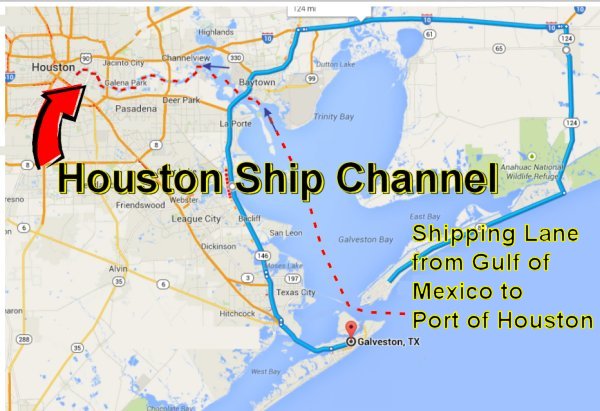
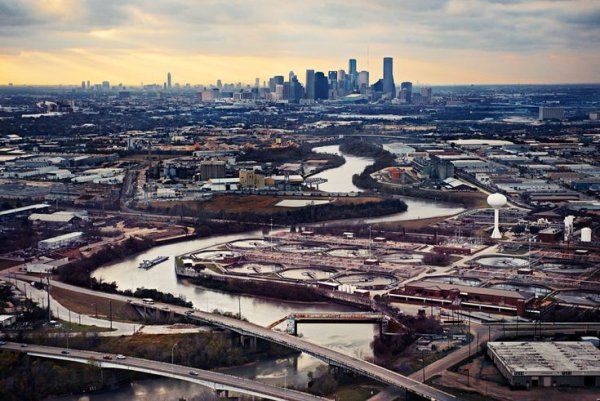
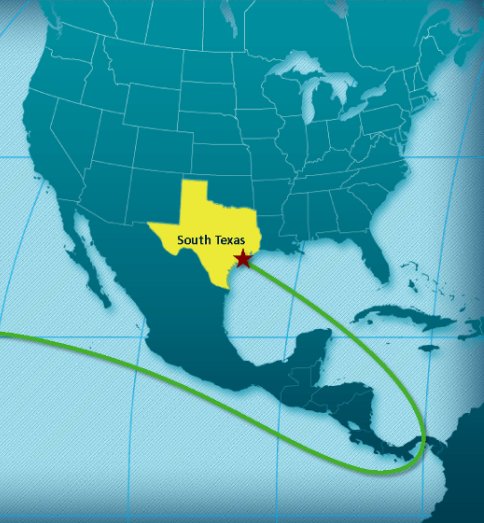 |
GALVESTON: Sam Maceo enters the void
|
The new seawall was
completed in 1915, but it was too late for
the port to stage a comeback.
Houston's gain was Galveston's loss.
Well aware Houston would hold the upper hand
from now on, the civic leaders decided 'tourism'
was their best bet to make a comeback.
Since the seawall had created
a very beautiful beach in front of the
rebuilt city, why not put a hotel there?
In 1911, the Hotel Galvez was
completed. Unfortunately, the city's
economy was still in dry dock. Despite
the beautiful hotel and convenient
beach, there was no rush to fill the Galvez.
Fortunately
the
Prohibition Era (1920-1933) got Galveston
moving again. In hindsight, we now know
that a major unintended consequence of
Prohibition was the growth of urban crime
organizations... Al Capone, for example.
Into Galveston's economic vacuum came Sam
Maceo. Referred to as the 'Galveston
Godfather' and 'Mr. Galveston',
Maceo
quickly became the most important man in
Galveston
history.
|
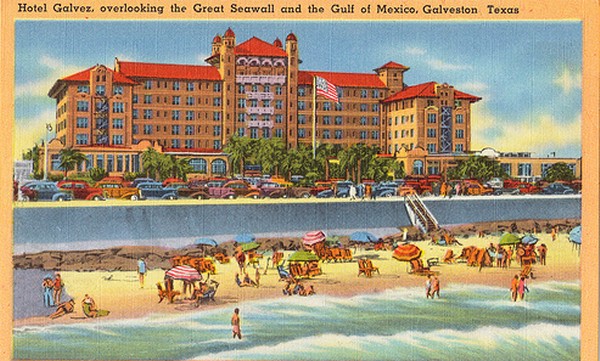 |
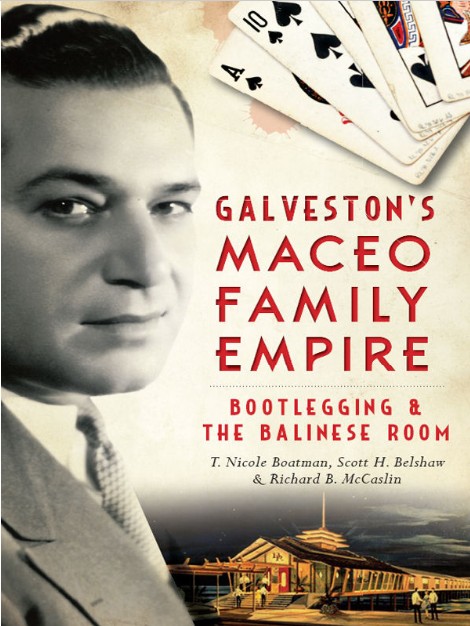 |
Sam Maceo
and his brother Rosario came to
Galveston shortly before the outbreak of
World War I. They were barbers by
trade, but soon discovered a lucrative side
business. As Prohibition took hold,
the Maceo brothers began to smuggle in rum
and cheap
wine to give as gifts to
appreciative customers.
Seeing
how interested their customers were in
liquor, the Maceos became serious
bootleggers. The
booze-laden islands of Jamaica, Cuba, and
the Bahamas were more than happy to send
schooners filled with liquor. 35 miles
southwest of the island was a rendezvous
point known as Rum Row. Out at sea, the schooners
loaded barrels onto smaller, more mobile
crafts which then headed to rendezvous
points hidden along Galveston's deserted beaches.
During
the Roaring Twenties, the Maceo brothers allied themselves with Beach
Gang leader Ollie Quinn to open the
Hollywood Dinner Club,
Galveston's most elegant hot spot. Sam Maceo's smooth personality made him
the face of the club. During
this time Maceo developed sharp
interpersonal skills that came in
handy when dealing with Island
businessmen
and politicians.
In short order, Maceo learned the name of
every important person on the island and Galveston County.
His political skills paid off
handsomely. Through the use of bribes
and cajolery, Maceo persuaded law
enforcement to do the dirty work for him.
Fortuitous arrests of rival gang leaders
allowed the brothers to gain complete
control of the island's underworld without
a blood bath. By the late 1920s, the
upper echelon of Galveston gangs had
gone by the wayside. With their
enemies in prison, the two brothers had
full control of the island's vice-related activities.
Sam
Maceo operated more like a clever politician than gangster. Known as the "Velvet Glove", Maceo's smooth style and ability to
influence people was legendary. Through his vast network of
connections, Maceo wielded influence
comparable to an elected official and business leader.
Sam
Maceo maintained close relationships with
politicians throughout Texas, fellow mobsters and
celebrities throughout the United States. Thanks in large part to his
non-violent approach to business, local law enforcement found it advantageous to look the other way.
This
benign enforcement attitude extended to
booze
and gambling
as well as to prostitution.
|
Galveston had been a hot spot for
prostitution dating back to the island's origins as a
pirate hangout. Oddly enough, citizens
of Texas had a curious reason to look favorably on Scarlet
Women. Many consider a mulatto prostitute to be the unsung heroine of the 1836 War of
Independence between Texas and Mexico.
Surely you
remember the Alamo. Sad to say, every single man, even
John Wayne, went to his death defending the fort. As
the remaining Texas army retreated to the east in disarray,
Generalissimo Santa Anna lackadaisically pursued. To
him, the ineffective remainder of the Texas Army posed little threat. When a
Mexican advance force raided a Galveston warehouse, they discovered a large group of
enticing slave women.
Following his
brutal victory at the Alamo, Santa Anna arrived at the
warehouse soon after. He set his eyes on a pretty plaything
with light-brown skin. She was an attractive
indentured slave known as Emily Morgan. Claiming Emily as his own,
Santa Anna ordered the Mexican Army to rest for three days.
This was a huge break for the nearby Texan army because it
allowed them to prepare an ambush.
On the night of
April 20, Santa Anna set camp in a vulnerable location on
the shore of Buffalo Bayou (the eventual Ship Channel). Due to his contempt for the
Texans, Santa Anna did not even bother to post guards.
Colonel Pedro Delgado later wrote "the campground of His
Excellency's selection was in all respects a mockery of
military common sense. Any youngster could have done
better."
So why was Santa
Anna so stupid? Interesting question. Legend has
it that Emily was largely responsible for Santa Anna's
extreme negligence. He was so smitten with her charms
that he anticipated a long night of passion. Placing
Emily in his three-room carpeted tent complete with opium
and champagne, he posted a Do Not Disturb sign. One
can only assume this young beauty beguiled the General
throughout the night. Santa Anna wasn't the only man
who let down his guard. Rumor has it the group of
scarlet ladies entertained members of the Mexican Army all
night long.
The following
morning, the Texas army under General Sam
Houston surprised the flat-footed
Mexicans. Lo and behold, the Texans
had caught the Mexicans with their pants down... literally
as well as figuratively. The fight lasted just 18
minutes. In that brief time, 600
Mexican soldiers were killed and 730
captured. By contrast, only nine
Texans died.
Was it the
superior fighting ability of the Texas men that created
Texas Independence? Or was it the
superior charms of the slave girls?
Thanks to their secret weapon, Texas had its independence and the nearby community
on the edge of the swampland got its
name... Houston.
|
You probably had no
idea Texas history was so colorful. Indeed,
some gave Emily Morgan more credit for the victory than Sam
Houston. The
distraction provided by Emily
Morgan was not forgotten. Indeed,
Emily's sacrifice was immortalized
in song. She came to be
known as "The Yellow Rose of Texas" due to her light skin as
well as her vital importance in
the victory at San Jacinto. Perhaps
the role the Yellow Rose and her
lady friends played in
disarming the Mexican army explains Galveston's relaxed
attitude regarding women of the
night. Throughout the Maceo
Era, Galveston law enforcement repeatedly turned a blind eye
towards prostitution.
After booze and
babes, the third cornerstone of the Maceo operation was
gambling. Poker had long
been popular in Texas, birthplace of "Texas
Hold ‘Em'". So
what if gambling was illegal? No
one cared. Even before Maceo
came along, there had been a long history of closed-door
gambling and underground casino operations in Texas.
The final piece of
the puzzle was the fancy nightclubs. Maceo
made sure respectable people could wine and dine to fine
entertainment in the front while
a
legion of high-stake gamblers
visited hidden alcoves in the back with
gaming tables. Unlike the Brando character in
The Godfather,
Sam Maceo was not known for violence. Since
Maceo was allowed to
run
his nightclubs free of interference, he preferred
persuasion in lieu of force. Although his brother Rosario
was known to shed blood on occasion, by and large
Maceo made sure there were no widespread vendettas in
Galveston.
While Sam Maceo was getting rich from illegal activities
such
alcohol, gambling, and prostitution,
there was a part of him determined to spread the wealth.
Apparently
Maceo had a soft spot for the little people. Seeing
him provide repeated acts of kindness and charity throughout the
community, it is small wonder he enjoyed widespread support.
Acting more like a benevolent dictator, Sam Maceo singlehandedly
returned prosperity to a town greatly in need of a hero.
|
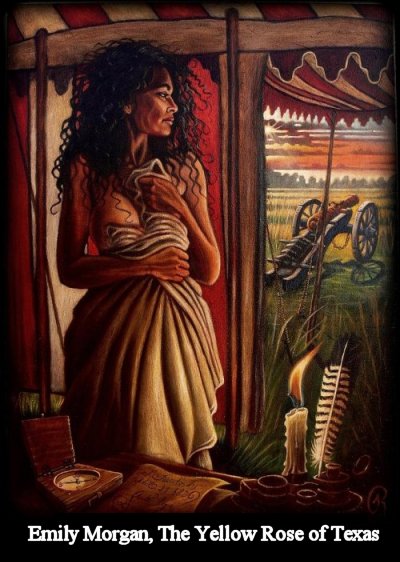 |
THE FREE
STATE OF GALVESTON
|
Sam Maceo was not a thug, he was a businessman.
Galveston needed tourists, so Maceo went the extra mile.
He made sure to have a series of small casinos such as the
one hidden in the restaurant where my friend Maria Ballantyne grew up.
These smaller establishments were designed to take care of customers with limited
budgets. In addition, Maceo
made sure to offer at least one high-end restaurant/casino
for the high rollers. These Vegas-style nightclubs
offered bootleg liquor, fine dining, and first class
entertainment in addition to high stakes gambling and ready availability of
alluring hookers.
Once Prohibition opened the door, the brothers built an
empire on the island with little opposition from the
locals. During Maceo's 30
years of glory
(1920-1950), law
enforcement pretty much let Mr. Galveston do whatever he wanted.
Nor did the State of Texas bother to interfere, at least not
until World War II ended.
Other than the occasional wink-wink
cosmetic raid where Maceo was
tipped off well in advance, as long as tourists kept flocking
to the island, Maceo was allowed to operate with impunity.
|
Let's face it, everyone in Galveston
knew what side their bread was buttered.
Not just that,
most Texans despised Prohibition, including
many politicians inside and outside
Galveston circles. One can assume most
politicians enjoyed visiting this wicked
Babylon as much
as the next guy.
Plus it helped that Galveston was free of nosy
neighbors and the indignant objections of
church ladies from other parts of the state. Isolated from the mainland
by a long bridge, Galveston was a world unto
itself. Looking
the other way, Texans seemed content to let Galveston
conveniently ignore the vice laws.
During this wild and crazy time, the
island was referred to as the 'Free
State of Galveston'. During the
Roaring Twenties, Galveston Island emerged as a popular
resort town. Attracting celebrity entertainers from around the
country, Maceo's vice-oriented
businesses were a major tourist draw. Beach by day, Vice by
Night. It helped that Galveston operated in a remote
corner of the state out of the eyes of many, the same way
Vegas hides from scrutiny in the barren
deserts of Nevada.
Why should
Amarillo or El Paso care what's going on in Galveston hundreds of miles
away? Furthermore, the "Free State"
moniker embodied a belief held by many Texans that Galveston
was exempt from the repressive mores and laws imposed by the
government. Although they would never say so in
public, Texas politicians didn't like
Prohibition any more than the next guy.
Unwilling to shut down the only place they
could go to have fun, they quietly protected their favorite pleasure playground.
As such, for 30 years Galveston was not required to obey rules that applied to the rest
of Texas. Laissez le bon temps rouler!
|
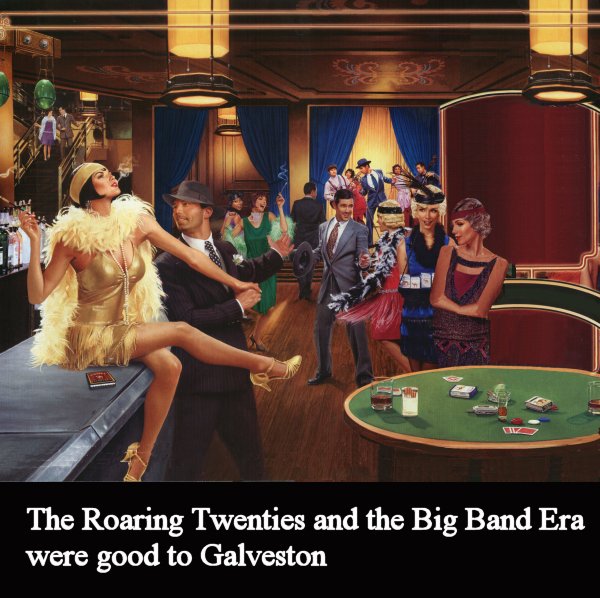 |
GALVESTON: THE Balinese
room
|
Since gambling and bootleg liquor went
hand-in-hand with prostitution, the popular nightclubs along the
Galveston seawall were well-known fronts for
illegal activities during the Prohibition
Era. Hoping to visit casinos hidden from sight, people from across
the state and nearby Louisiana flocked in.
Houston
millionaires made sure to buy a palatial
mansion in Galveston to accommodate their
frequent visits to Maceo's seraglios. In this way,
much of that new-found Houston oil money made
its way back into the Galveston economy.
The infusion of tourist capital and real estate tax income
made all the difference in the world. Sam Maceo became the talk of the town.
Thanks to the prosperity generated by Maceo's
Era of Decadence, the Twenties
and Thirties became the heyday of
Galveston.
During this time, Sam Maceo turned Galveston
into the leading resort mecca of the Gulf
Coast.
The gem in Sam
Maceo's empire was the popular Balinese Room. This
fancy nightclub with its hidden casino at the end of a pier was Maceo's master
stroke.
Opening
in 1929, Maceo placed his favorite restaurant right
across the street from the Galvez, Galveston's most luxurious
hotel. Guests from around the country
could fly in, stay at the Galvez and party deep into the
night at the Balinese without any fear of law enforcement.
Thanks to the ingenious lengthy entrance, any time the pesky
Texas Rangers raided the nightclub, all signs of illegal
activity were safely hidden behind lock and key by the time
they made it all the way to the back.
|
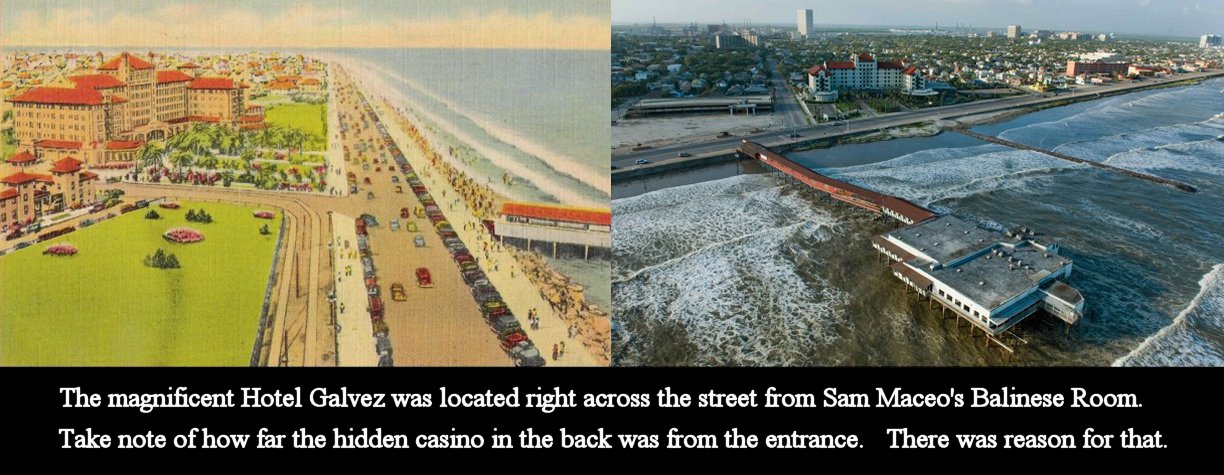
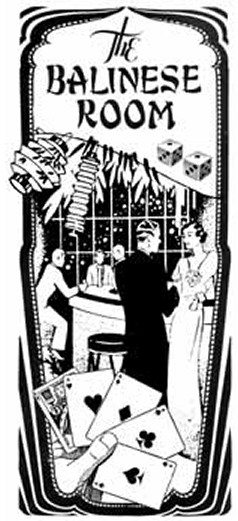 |
When speaking of the Maceo Era, people often refer to Galveston as
Vegas of the Thirties.
As we shall see, this comparison proved highly ironic. Vegas and Galveston
would one day have a very
interesting connection. Because
he broke laws, Sam Maceo was considered a gangster, but at
heart he operated like a modern-day Vegas businessman.
Over time, the Maceo brothers came to own all the
major vice-oriented businesses on the Island.
Adding casinos to his nightclubs,
Galveston was Vegas before Vegas.
In the midst of rampant sin and
debauchery, the
Balinese Room stood out as the
most famous nightclub of all. The Balinese
Room was ostensibly a restaurant, but there
was a well-known casino placed at the end of
a long pier. The casino extended so
far into the Gulf there was a standing joke
that the waiters used their break to catch
fish. Gambling tables were designed to
quickly convert into bridge tables. If
there was a raid, the band located in front
would play the "The Eyes of Texas" as
a warning to the card dealers in back. By
acting fast, police were greeted by
well-dressed patrons playing bridge and
sipping soft drinks.
Sam Maceo used a well-known real estate
technique known as 'location location
location' to ensure his club's
success. He put the Balinese right across the street
from the magnificent Hotel Galvez.
Smart move.
Sam Maceo cultivated a relationship with
William Moody, Galveston's business leader
and owner of the Hotel Galvez. Moody
and Maceo got along just fine. Thanks
to Maceo, Moody's giant hotel stayed packed
with celebrities and guests who flocked to
visit the nation's newest resort town.
Imagine the visitors' delight to discover every
vice known to man was open to all, a major
lure during Prohibition. Galveston
became the
playground of the Southwest,
even bigger than New Orleans by some
accounts.
30 years is a long time. The reason
Sam Maceo lasted so long was obvious.
The majority of the citizens liked it that
way. Everybody was making money.
Not one bank closed during the Depression.
Tourism was strong. The hotels stayed
busy year-round, even in the winter.
Everyone who wanted a job had one. Ten
percent of the Island's adult population
worked for the Maceo organization.
Every merchant in town profited
directly or indirectly from Maceo's empire. Maceo was so obsessed with protecting the
reputation of his operation he made sure
anyone who hit it big at his casino received
an escort back to their hotel.
Ironically a town based on crime had the
lowest crime rate in the state. No one
locked their doors; the streets were safe at
night. Perhaps the highest compliment
of all came courtesy of the Catholic Church.
A pew was reserved for Maceo and his family
every Sunday. One of his closest
friends was the Monsignor.
|
Though certainly no saint, Sam Maceo was
extremely civic-minded. His assistance
to charities, churches and schools was
another reason his organization had little
trouble with the law. Other than the
occasional perfunctory pre-arranged raid for
show,
law enforcement left him alone. By sharing his profits throughout the city, Maceo endeared himself not just to William
Moody, but to many subsidiary businesses.
In this way,
Maceo
returned prosperity to a local economy still
depressed
from the hurricane devastation. Understandably no one dared upset the apple cart. Legitimate
businesses
such as banks, restaurants and hotels thrived thanks to the illegal
activities. Not just that, real estate was booming
thanks to Houston millionaires buying up
those fancy mansions along Broadway Boulevard.
Since
Maceo had the tacit support of the business
community, it stands to reason that law
enforcement and politicians were under his
spell as well. The benevolence of Sam
Maceo helped considerably. During his
years
as the island's dominant figure, Maceo never
abused his power. He generally did not
attempt to prevent others from prospering so
long as it did not interfere with his
business interests. The economic
damage caused by the Great Storm lasted 20
years. Sam Maceo was the guy who
turned the lights back on. During his
30 year reign, the citizens had money in
their pocket again. People referred to
Sam Maceo as "Mr. Galveston".
|
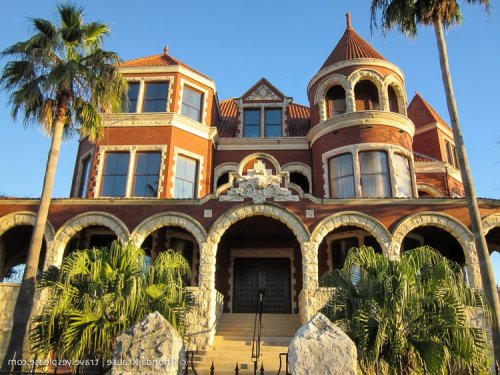 |
frank Sinatra AND THE BALINESE ROOM
|
Sam Maceo was a
shrewd man who knew how to make money in legitimate ways as
well as vice. The Balinese Room not just a gambling
joint, it was a first-class nightclub. Maceo made it a
point to attract well-known entertainers from across the country
to perform at the Balinese. Not only
did the performers appreciate getting paid, in their spare time
they
enjoyed booze, babes and gambling just as much as the next guy.
The Balinese was a popular destination for the biggest names
in show business.
During the Roaring Twenties and Swing Era of the
Thirties, there was always a house band ready to play the
favorite tunes of the day. The
Balinese Room featured big bands such as
Phil Harris, Guy Lombardo, Jimmy Dorsey, Harry James and Val Olman. It is no
wonder that the Balinese became a prime
destination for the rich and famous. Maceo learned
early on how to harness celebrities to boost the appeal of
his Balinese Room. The nation's biggest stars
performed there, including Bob Hope, Spike Jones, Peggy Lee,
Vaughn Monroe, Duke Ellington, Mel Torme, Tony Bennett, and
Edgar Bergen.
Oh,
plus some guy named Frank Sinatra. I have expressed my
belief in the Arabic doctrine of Darkest Day and Brightest
Day. At some point in every man and woman's life, they
can do no wrong. Everything they touch turns to gold.
Then they get cocky and do stupid things. Pretty soon their whole world turns to hell. This
includes people with
money, brains, fame and oodles of talent. No one is
immune. In
1950, Sinatra hit his Darkest Day.
|
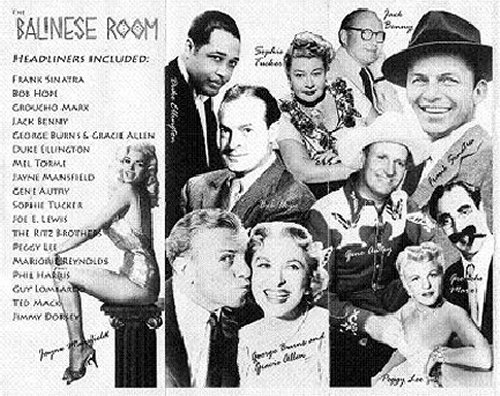 |
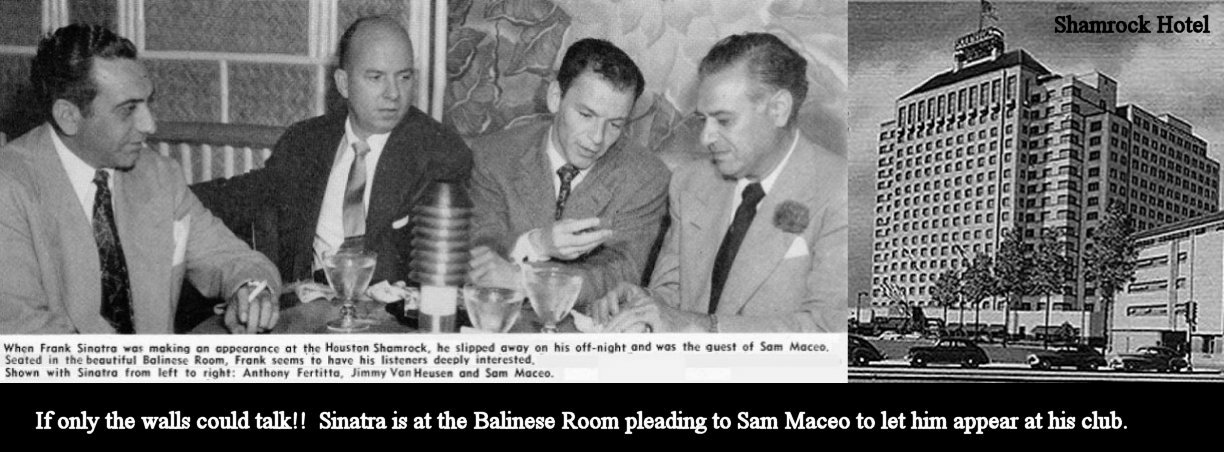 |
Age 35,
Frank Sinatra was down on his luck. He was one more
bad
step from being forgotten. A broken man, Sinatra tried
to put his life back together starting at Houston's Shamrock
Hotel. Desperate for a job, he persuaded oilman Glenn
McCarthy into giving him a short gig at the Cork Club,
a plush private nightspot on top of Houston's legendary
Shamrock Hotel.
McCarthy constructed the
Shamrock in 1949. At the time, it was
the largest hotel in the United States. The
resort-like hotel with its restaurants, bars and swank
boutiques became a popular gathering place for society matrons, business notables and visiting celebrities. It was characterized as 'Houston's
Riviera' during the early 1950s. The Shamrock's
exclusive Cork Club was the site for many oil deals, fist fights,
and hustling along with performances by
famous singers such as Sinatra. Except that Sinatra
wasn't quite so famous at the moment.
What
went wrong?
Despite his marriage to Nancy, mother of his three children,
Sinatra was
known as a ladies man. Sinatra could have any woman he
wanted. Then one day he met a woman who could have any
man she wanted... and did... frequently.
Her
name was Ava Gardner.
Due to his disastrous love affair with
this notorious femme fatale, Sinatra's life and career hit rock bottom
in 1950.
Music tastes had
shifted after the horrible World War II.
Strike One. Negative publicity about Sinatra's adultery was Strike Two. Ava Gardner
left him to chase a swarthy Spanish bull fighter. Strike
Three.
One morning, Sinatra
and his close friend Jimmy Van Heusen
left the Shamrock to drive
down to Galveston.
Van Heusen was a composer of many Sinatra hits such as 'Come Fly With
Me'. Van Heusen was also the man who rushed Sinatra to the hospital
following a suicide attempt
over the breakup of his marriage to Ava Gardner.
This was Sinatra's Darkest Day.
With
his career on the brink, Sinatra came to
plead with
crime boss Sam Maceo to book him
into the Balinese Room. This led to an interesting chapter in
Sinatra's life.
Sinatra
was determined to talk Maceo into letting him follow his
Cork Club contract with a gig at the Balinese. If Maceo
didn't hire him, Sinatra had no other place to go.
This was not the first time that
Sinatra used mob connections
to advance his career.
However this time Sinatra was on his knees begging.
Maceo was skeptical. He knew about
Sinatra's self-inflicted problems. However, to
Sinatra's great relief, Maceo said okay. However, Sinatra was no
longer important enough to be the featured performer.
For the time being, Sinatra would serve as
singer for the house
band. Can you imagine that? Dead broke, Sinatra stayed in a flea bag hotel
and ate his meals on credit. However, this respite was just
the break Sinatra needed to pull himself back together.
While no longer the fabled star of yore, Sinatra's extended
stay at the Balinese played a
large role in his comeback. Say what you will about Sinatra, he was
very loyal to his friends. Sinatra never forgot what
Sam Maceo had done for him. He would one day repay the
debt in a very special way.
Although Mario Puzo's Godfather books were considered
a work of
fiction, some say the chapters did not require much
imagination.
For example, the story of how
singer Johnny Fontane begged the
Godfather to help him get a key role in a hit movie is said
to be a thinly
disguised reference to Sinatra and his benefactor Sam Maceo.
After the Balinese, Sinatra's luck
improved.
Handed a plum role in
From Here to Eternity, Sinatra
maximized his second chance with an Oscar-winning
performance. Feeling his mojo return, Sinatra's
comeback was complete.
At the same time Sinatra's star began to rise, Maceo's
operation hit hard times.
Maceo began to draw
so much heat from the Texas Rangers
starting around 1950, he was forced to transfer
his operation to Las
Vegas. This move was highly reminiscent of scenes from
Godfather Part II
where racketeers moved their East Coast profits to Vegas to become
legitimate.
|
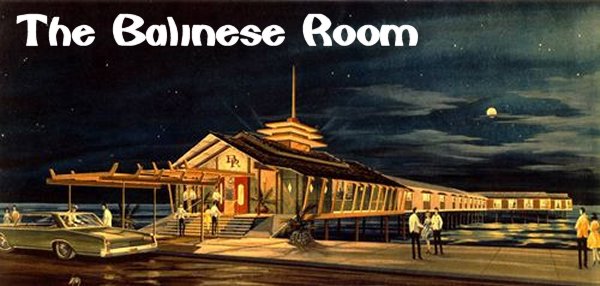


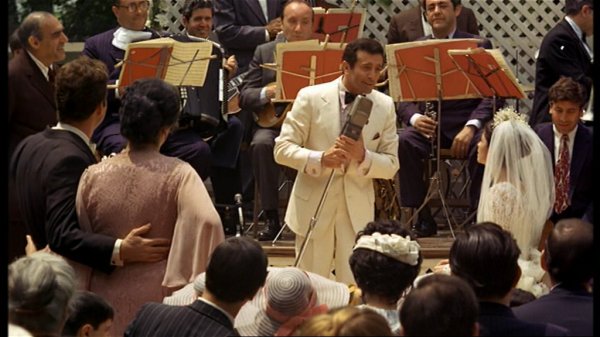 |
the downfall of Galveston
|
Using considerable skill, Sam Maceo
made the Balinese Room famous throughout the
nation. The impressive list of
entertainers who performed at his club was testimony to
his substantial national influence. Given the prosperity
he created and his benign approach, Maceo
knew few enemies. This explains how he
was allowed to run vice on the island for
three decades with little opposition.
So what went wrong?
Here again we are back to Darkest Day and
Brightest Day. The onset of World War II
marked the
beginning of the end.
After Pearl Harbor, people weren't exactly in the
same party mood as they once had been.
Prohibition had been lifted, so alcohol was
readily available, thereby eliminating a major
reason to visit Galveston.
Then the Hotel Galvez across the street
was requisitioned as headquarters for Coast Guard
soldiers responsible for
patrolling the Gulf of Mexico.
Not only were tourists forbidden to stay at the
Galvez,
the Balinese Room was declared 'off-limits'
for service men who barracked at the hotel.
An armed MP was posted at the front of the
Balinese to discourage military personnel
from sneaking in. As one can guess,
business
tapered off substantially. Still, the
Balinese remained popular enough. It
quickly regained momentum when World War II was over.
Unfortunately the Texas
political climate changed dramatically.
As the Fifties approached, a law and order crowd
took over in the
state capital with a pledge to
put Maceo out of business.
|

Although
Sam Maceo had local law enforcement in his
back pocket, the legendary
Texas Rangers were a different story.
For thirty years, laws that applied to
other parts of Texas had not applied to
Galveston. However, after the war, the
open-minded attitudes of Texas politicians seemingly shifted.
Law and Order politicians from the mainland called upon the Texas Rangers to
look into the Maceo operation.
The appearance
of the Texas Rangers
at the Balinese created a semi-comic cat and
mouse game.
Sam Maceo did not give up easily. He
devised an
ingenious strategy known as 'The Ranger Race Track'. It was
well-known that the casino
was operating in violation of the law.
In addition, the club’s illegal gambling made it a
hub of mob activity. The problem was
catching the gamblers in the act.
Needing evidence to shut the place down, the Rangers set up shop at a hotel near the
club and raided the casino often.
However their
efforts were thwarted by the length of the
pier. Upon their arrival, the band would strike up
the popular song 'Eyes of Texas'. Thus alerted, the dealers
and waitresses at the back began a
well-rehearsed cover-up. They were so
fast, by the time
the Rangers made it to the tail end of the
long corridor, the evidence was gone.
The cards and chips
had vanished into secret walls and hidden floor
pockets, the tables were covered with
silverware and tablecloth. "Can we
help you, gentlemen?"
The Rangers did eventually shut down the
club.
The breakthrough came when they
gave up trying to catch anyone in the act.
Taking a page out of the MP technique used
in the war, uniformed Rangers took turns sitting in the
restaurant part of the club every day from morning to end. Intimidated by the Rangers’
constant presence, the customers stopped coming.
As investigation
into his activities grew more serious, Maceo
was fed up with the interference. Frustrated by
the constant need to keep his extensive gambling activities
under wraps, Maceo turned his eyes elsewhere.
At this point Maceo decided to move his empire to Nevada.
He became a major player in a new mob venture known as 'Las Vegas'.
Late in
1950
Maceo handed the Galveston operation to
Anthony Fertitta and left town.
Maceo became the
leading investor in the
Desert Inn, a new Vegas casino which opened in
1950. In its day, the
Desert Inn was the largest and most elaborate resort
casino
on
the Vegas Strip. However, business was slow at first.
Fortunately Maceo knew just who to
call. Frank Sinatra was a loyal friend who
enjoyed returning a favor. Sinatra's
fame
helped Sam Maceo get the Desert Inn off to a great
start. What goes around comes around.
If
Texas had legalized gambling, Sam Maceo said
he could have made Galveston bigger
than Havana and Las Vegas combined. Too bad the right
people weren't listening.
Otherwise they
would have supported Maceo instead of
running him out of town.
Vegas
was just a dream during Galveston's heyday.
If Maceo had
been allowed to run things his
way, his 30
years of success would have made his Vegas
investment unnecessary. Instead
mob money would have gone
directly to Maceo's
lucrative Galveston playground. One can
only wonder where Galveston would be
today if Sam Maceo had gotten his way.
Unable to get gambling
legalized in Texas, Galveston's loss
became immense good
fortune for Las Vegas.
What a
shame. Look
at Las Vegas today. Houston could have been the
next door neighbor to the largest resort
center in the country. Considering
Houston doesn't have a clue when it comes to
attracting tourism, the two cities could
have established a cooperative relationship
instead of years of antagonism.
So goes the fickle finger of Fate.
|
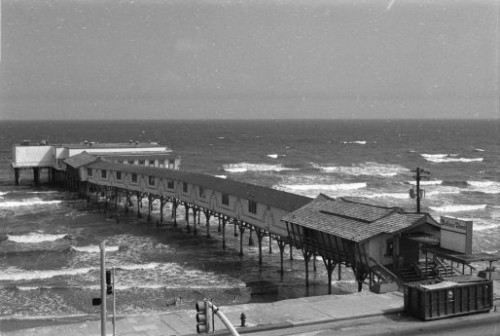

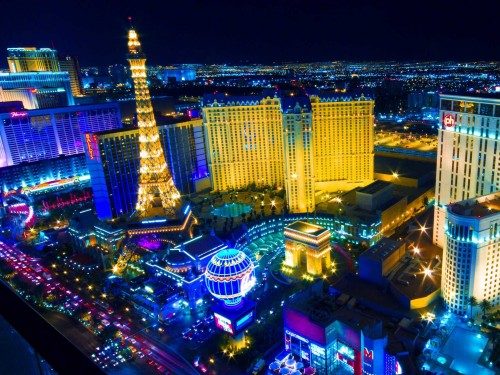 |
"You don't know what you've got till it's gone." -- Joni
Mitchell
Due to the constant
harassment, by 1957 the Balinese
was out of business for good.
Sam Maceo was long gone by this
time, leaving his lieutenant Anthony
Fertitta behind to pick up the pieces.
People say the
day Maceo left town was almost as bad as the day the Great Storm
hit. The horror and death count were missing, but the damage to
the economy was just as bad. Once the Texas Rangers turned out
the lights, Galveston plummeted rapidly. Without the Velvet Glove, things were never the same. Vegas became
a boom town and Galveston became a ghost town.
The closing of the
Balinese marked the end of an era.
Prostitution was eliminated. Gambling was eliminated. Forty-seven
nightclubs,
several brothels, and other vice establishments were reportedly closed. 2,000 slot machines were destroyed. Though officials
claimed to have destroyed all the gaming equipment, that was
nonsense. Most of
the equipment had been previously shipped to Las Vegas before the authorities
could
confiscate it. In the end, it didn't matter.
Tourism was completely gone. The hotels were empty and put up for sale. No one bought them.
Beautiful mansions were put
up for sale. No one bought them. Everything began to
deteriorate.
The Texas Rangers claimed they had
eliminated a serious criminal element. However, as
they say, be careful what you wish for.
Now that Sam Maceo
was gone,
people learned what real crime was. A far more dangerous criminal element
entered the vacuum created by Maceo's departure. Taking
advantage of Galveston's history of lax law enforcement, street
gangs brought guns, narcotics and
armed robbery to the city. There was a
legend that Maceo's bookkeepers used to walk the daily proceeds
to the bank without escort. That's how safe things were.
Those days were over. Now that the thugs
ruled, violence
unheard of in the Maceo Era took hold.
The outside forces
that killed the Golden Goose doomed Galveston to difficult
economic times. During the Fifties,
Sixties and Seventies, Galveston
entered a steep decline
towards urban decay.
With minimal activity at
the Port and tourism limited to
day trippers from Houston heading to
the beach, economic activity remained
anemic for thirty years.
Thirty years is an
eternity.
As the years passed, the negative consequence of running Sam Maceo out of
town became
more apparent.
The population
declined as people moved to Houston and elsewhere in
search of employment. With a greatly diminished tax base,
public services were curtailed. This was a mistake. Seaweed
and dead fish were left to rot on the beach in the hot sun. The beach
smelled and litter was not being picked up regularly.
The limited police presence allowed lowlifes to dominate.
Drinking, cursing and
loud music made the beach unpleasant for
families to visit.
Thugs roamed at will. Unchallenged by the dwindling police
force,
ruffians accosted tourists and vandalized
cars. As rumors of
nasty beach conditions and possible danger made their way back to Houston, fewer people bothered to make the trip down.
Another blow came
when Houston's millionaires lost interest in Galveston's beautiful old
homes. Once the area's popularity was gone,
the old homes were left to rot or be sold for pennies on the dollar.
Hundreds of magnificent Victorian-style homes and
buildings fell into disrepair and neglect.
Conditions were bad and there was not much hope the situation would
change. There was no reason whatsoever for tourists to
visit and Houston had stolen all the shipping long ago. By the time the
Seventies rolled around, Galveston was in deep trouble.
With magnificent homes crumbling before their eyes,
the last vestiges of the city's great past
disappeared.
About this time, a
very bad joke was passed around.
During the Great Storm, there was a story
about several men who were last seen
clinging to a flimsy board in the flood
waters.
The desperate men appeared to be trying to
reach the sturdy Tremont Hotel, one
of the few havens still standing. Apparently they drowned in the deep waters just
before reaching safety. Legend has
it that their ghosts took up residence in
the Tremont Hotel.
One day someone
commented publicly that
the spooky ghosts in the Tremont
had not bothered to scare anyone for quite some time.
Did anyone know where they went? The local comedians
had a field day. Galveston was so
dead, even the dead people didn't want to stay.
Fortunately, out of
nowhere a man appeared who wanted to help. His name was
George. Maria Ballantyne's brother decided
to save
Galveston.
|
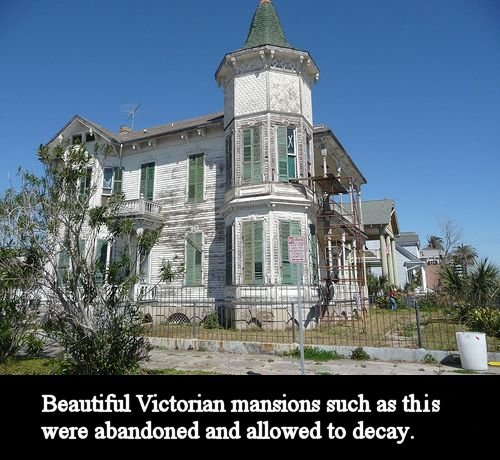

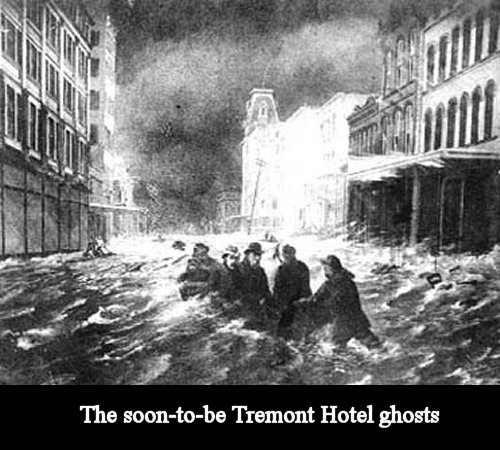
|
|
|